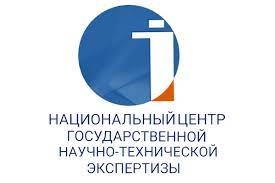TEXT AND THE FEATURES OF ITS ADAPTATION
https://doi.org/10.55491/2411-6076-2025-3-256-269
Abstract
This article touches upon the topics of text, text linguistics and text adaptation. The main topic of the article is one of the urgent problems of modern linguistics – text adaptation. In addition, the conclusions and principles of scientists studying the linguistics of the text are analyzed, and an analytical review is made. Modern ways of text adaptation are discussed. Over the past twenty to thirty years, interest in this field of linguistics has attracted the attention of foreign and domestic scientists. In this regard, this article provides an analytical review of the researchers' work. The article uses methods of generalization, comparison, analysis, reduction, and others. In addition, several areas of text linguistics are being considered, which are currently developing. The research and discussion section provides an adapted version of the first three sentences of the story “Taza Bulaq” (The Pure Spring). It is shown that the source text can be adapted into a secondary text using the reduction method. The relationship between the source and secondary text is analyzed. One of the main areas of text adaptation is its compliance with the language level, which is currently very relevant. The assimilation of lexical units corresponding to his level in the process of learning a second language can increase the motivation of the reader to learn the language. In this regard, the article examines the importance of text adaptation in the process of language learning.
About the Authors
B. MyrzabekKazakhstan
Bibikhan Myrzabek, Doctoral student
Almaty
P. Medetbekova
Kazakhstan
Perizat Medetbekova. Candidate of Philological Sciences
Almaty
T. Kalbirova
Kazakhstan
Tolkyn Kalbirova
Almaty
References
1. Ahmetova, M.K. (2008) Matin lingvistikasy: Oqu-adistemelik qural. Oral: Agartushy. 148 b. [Akhmetova, M.K. (2008) Text Linguistics: Educational and methodological tool. Ural: Agartushy. 148 p.] (in Kazakh)
2. Bahtin, M.M. (1979) Problema teksta v lingvistike, filologii i drugih gumanitarnyh naukah – Jestetika slovestnogo tvorchestva. Moskva. 281 s. [Bakhtin, M.M. (1979) The problem of text in linguistics, philology and other humanitarian sciences. Esthetics of verbal creativity. Moscow. 281 p.] (in Russian)
3. Brygina, A.V. (2004) Lingvisticheskie principy adaptirovanija hudozhestvennogo teksta: dis., 10.02.01. [Brygina, A.V. (2004) Linguistic principles of adaptation of artistic text: dis., 10.02.01.] (in Russian)
4. Gal`perin, I.R. (1981) Tekst kak obʼekt lingvisticheskogo issledovanija. Moskva: Nauka. 139 s. [Galperin, I.R. Text as an object of linguistic research. Moscow: Nauka. 139 p.] (in Russian)
5. Halliday, М.А.K. (1974) Language Structure and Language Function in New Ho rizons in Linguistics. London. 145 p. (in English)
6. Halliday, M.A.K. (1978) Mesto funkcionalʼnoj perspektivy predlozhenija (FPP) v sisteme lingvisticheskogo opisanija. V kn.: Novoe v zarybejnoi lingvistike. Vyp. VIII. Moskva. 139 s. [Halliday, M.A.K. (1978) Place of Functional Perspective of Propositions. (FPP) in the System of Linguistic Description. In the book: New in Foreign Linguistics. Vyp. VIII. Moscow. 139 p.] (in Russian)
7. Hartmann, P. (1971) Text als Linguistisches Objekt. In: Beitrage zur Textlinguistik. München. S. 9-29. (in German)
8. Ionova, S.V. (2006) Approksimacija soderzhanija vtorichnyh tekstov: dis. 10.02.19. Volgograd. [Ionova, S.V. (2006) Approximation of the content of secondary texts: dis. 10.02.19. Volgograd.] (in Russian)
9. Lingvisticheskij jenciklopedicheskij slovar` (1990) Moskva: Sovetskaja jenciklopedija. 682 s. [Linguistic encyclopedic dictionary. Moscow: Soviet encyclopedia. 682 p.] (in Russian)
10. Myrzabek, B.M., Mambetova, M.K. (2023) Matin lingvistikasy: zhalpy sholu zhane ozekti maseleler KazUU habarshysy. Filologija serijasy. №4(192). [Myrzabek, B.M., Mambetova, M.K. (2023) Text linguistics: general overview and current issues Bulletin of the Kazakh National University. Philology series. No.4(192).] (in Kazakh)
11. Orazbaeva, F.Sh. (2000) Tildik qatynas: teorijasy men adistemesi. Oqu quraly. Almaty: Y. Altynsarin atyndagy Qazaqtyng bilim akademijasynyng Respublikalyq baspa kabineti. 208 b. [Orazbayeva, F.Sh. (2000) Language communication: theory and methodology. Textbook. Almaty: Republican Publishing House of the Kazakh Academy of Education named after Y. Altynsarin. 208 p.] (in Kazakh)
12. Pervuhina, S.V. (2015) Strukturno-semanticheskie i diskursivno-pragmaticheskie harakteristiki adaptirovannogo teksta: dis. 10.02.19. Rostov-na-Donu. [Pervukhina, S.V. (2015) Structurally semantic and discourse-pragmatic characteristics of the adapted text: dis. 10.02.19. Rostov-on-Don.] (in Russian)
13. Qaliev, G. (2005) Til bilimi terminderining tusindirme sozdigi. Almaty: Sozdik-Slovar`. 400 b. [Kaliyev, G. (2005) Explanatory dictionary of linguistic terms. Almaty: Sozdik-Slovar. 400 p.] (in Kazakh)
14. Schmidt, Z.Y. (1978) “Tekst” i “istorija” kak bazovye kategorii. V kn.: Novoe v zarubezhnoj lingvistike. Vyp. VIII. Moskva. 91 s. [Schmidt, Z.Y. (1978) “Text” and “history” as basic categories. In the book: New in Foreign Linguistics. Vyp. VIII. Moscow. 91 p.] (in Russian)
15. Smagulova, G. (2010) Korkem matin lingvistikasy: oqulyq. Almaty: Almaty qalasy akimdigi “Til” oqu-adistemelik ortalygy. 148 b. [Smagulova, G. (2010) Linguistics of artistic text: textbook. Almaty: Language educational and methodical center of Almaty city administration. 148 p.] (in Kazakh)
16. Verschueren, J. (2018) Adaptability and meaning potential. Paper presented at the 20th International Congress of Linguists: The Dynamics of Language, Cape Town, 2-6 July. UCT Press. P. 93-109. (in English)
17. Veyze, A.A. (1985) Chtenie, referirovanie i annotirovanie inostrannogo teksta. Moskva: Vysshaja shkola. 127 s. [Weise, A.A. (1985) Reading, referencing and annotating foreign text. Moscow: Vysshaya shkola. 127 p.] (in Russian)
Review
For citations:
Myrzabek B., Medetbekova P., Kalbirova T. TEXT AND THE FEATURES OF ITS ADAPTATION. Tiltanym. 2025;(3):256-269. (In Kazakh) https://doi.org/10.55491/2411-6076-2025-3-256-269

















